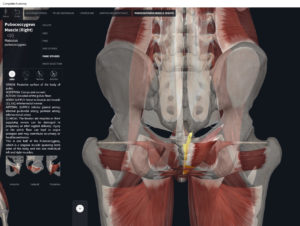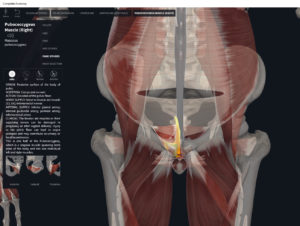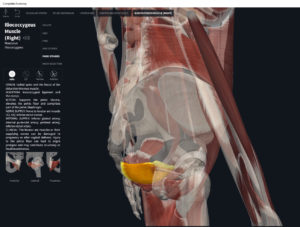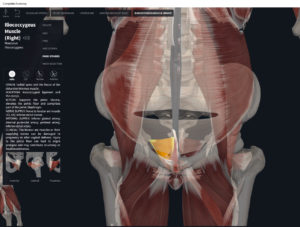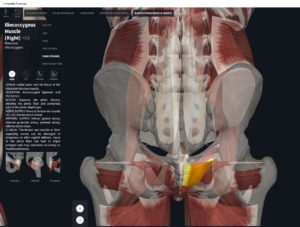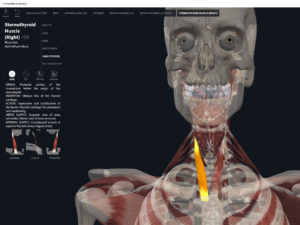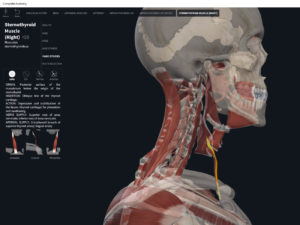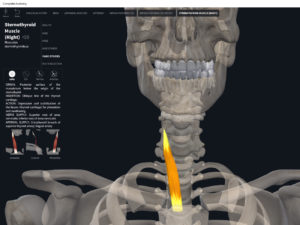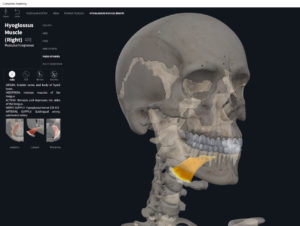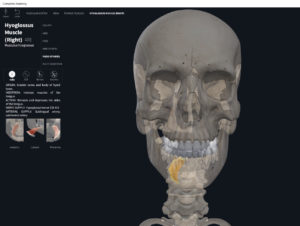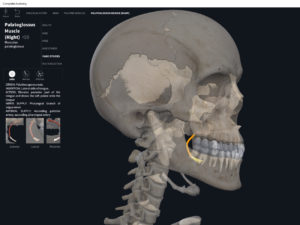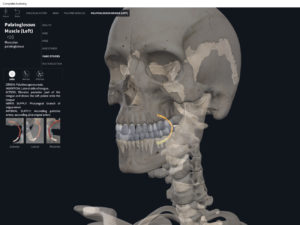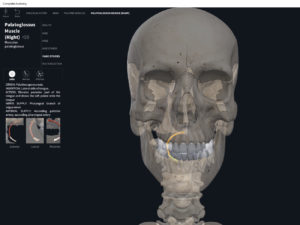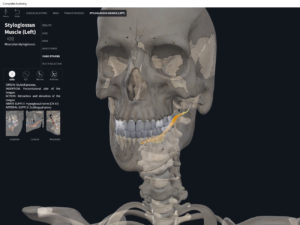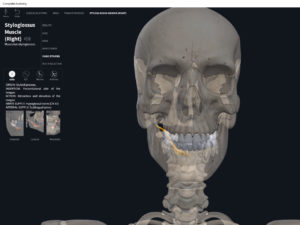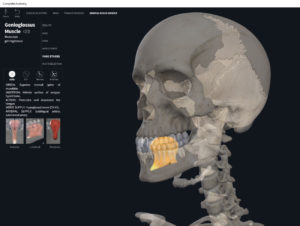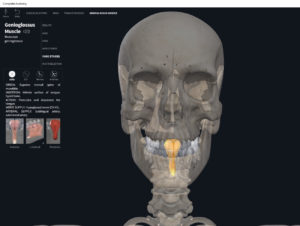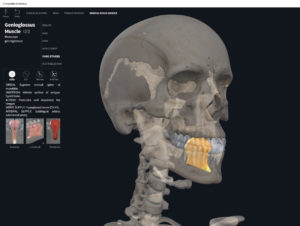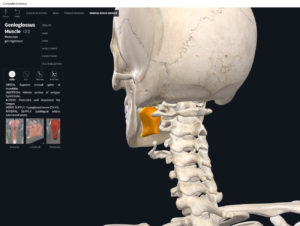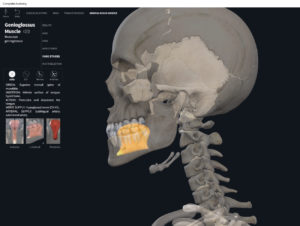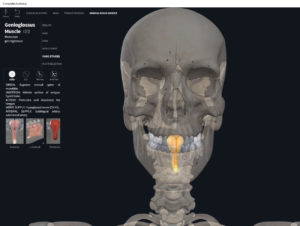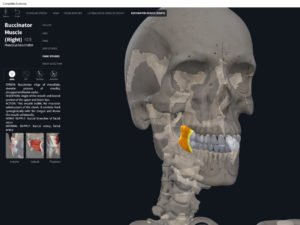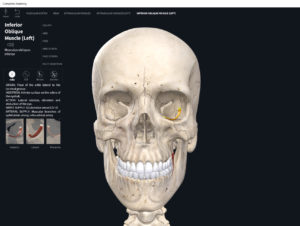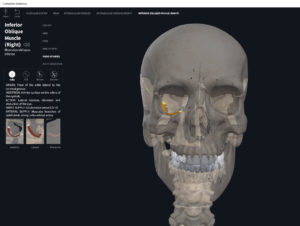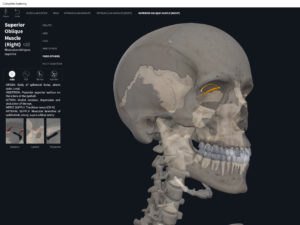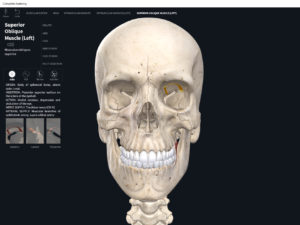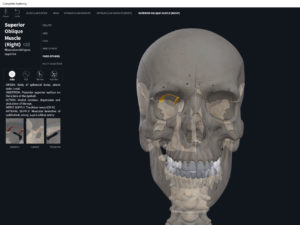Structure.
- Origin: pubis.
- Insertion: coccyx, urethra, anal canal, perineal body of the perineum, anococcygeal ligament.
Function.
- Concentric action: supports & maintains position of pelvic viscera; attenuates/resists increase in intra-abdominal pressure in forced exhalation coughing vomiting, urination, and defecation; constricts anus, urethra, and vagina.
- Reverse mover action:
- Eccentric action:
- Isometric action:
- Innervation: sacral spinal nerves S2-S4.
- Arterial supply: inferior gluteal artery.
Clinical Significance.
More.
- https://www.imaios.com/en/e-Anatomy/Anatomical-Parts/Pubococcygeus
- https://youtu.be/B1Y9zZsbhx4
- https://youtu.be/6lx-udPH1vM
References
Biel, A. (2015). Trail guide to the body: A hands-on guide to locating muscles, bones and more.
Clark, M., Lucett, S., Sutton, B. G., & National Academy of Sports Medicine. (2014). NASM essentials of corrective exercise training. Burlington, MA: Jones & Bartlett Learning.
Jenkins, G., & Tortora, G. J. (2012). Anatomy and Physiology: From Science to Life, 3rd Edition International Stu. John Wiley & Sons.
Muscolino, J. E. (2017). The muscular system manual: The skeletal muscles of the human body.
